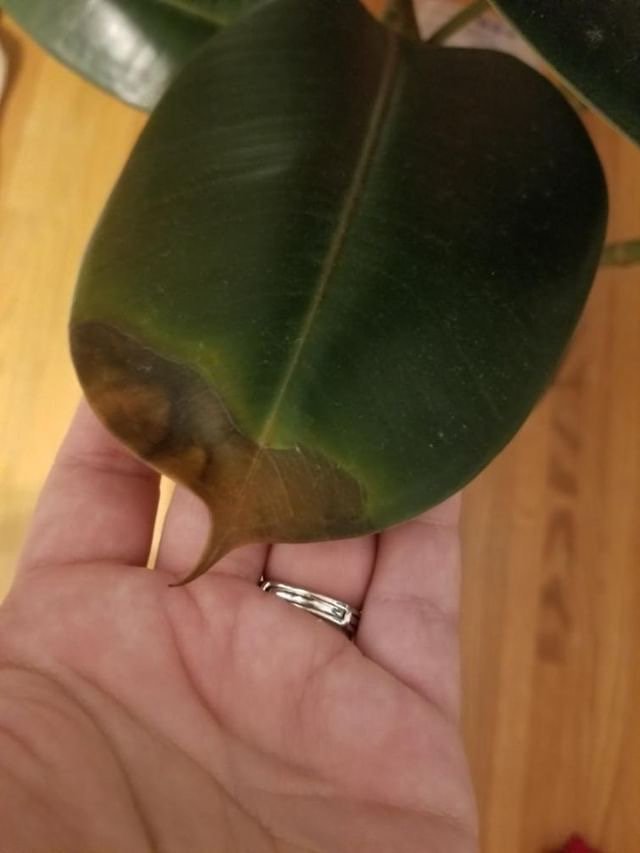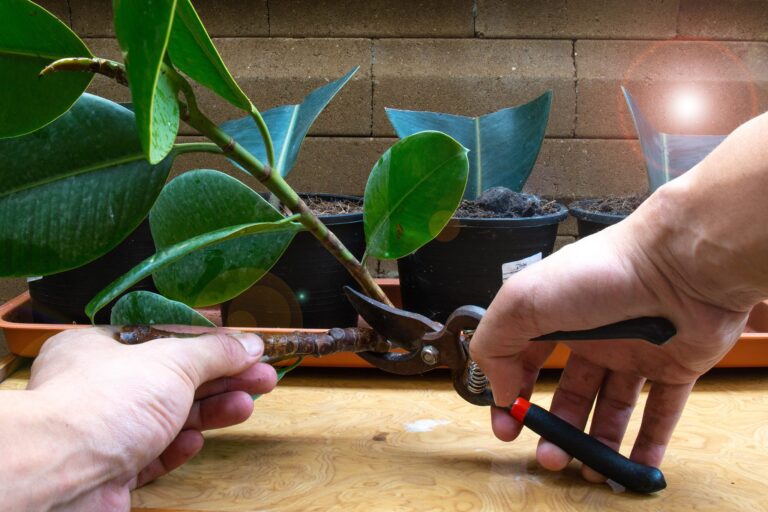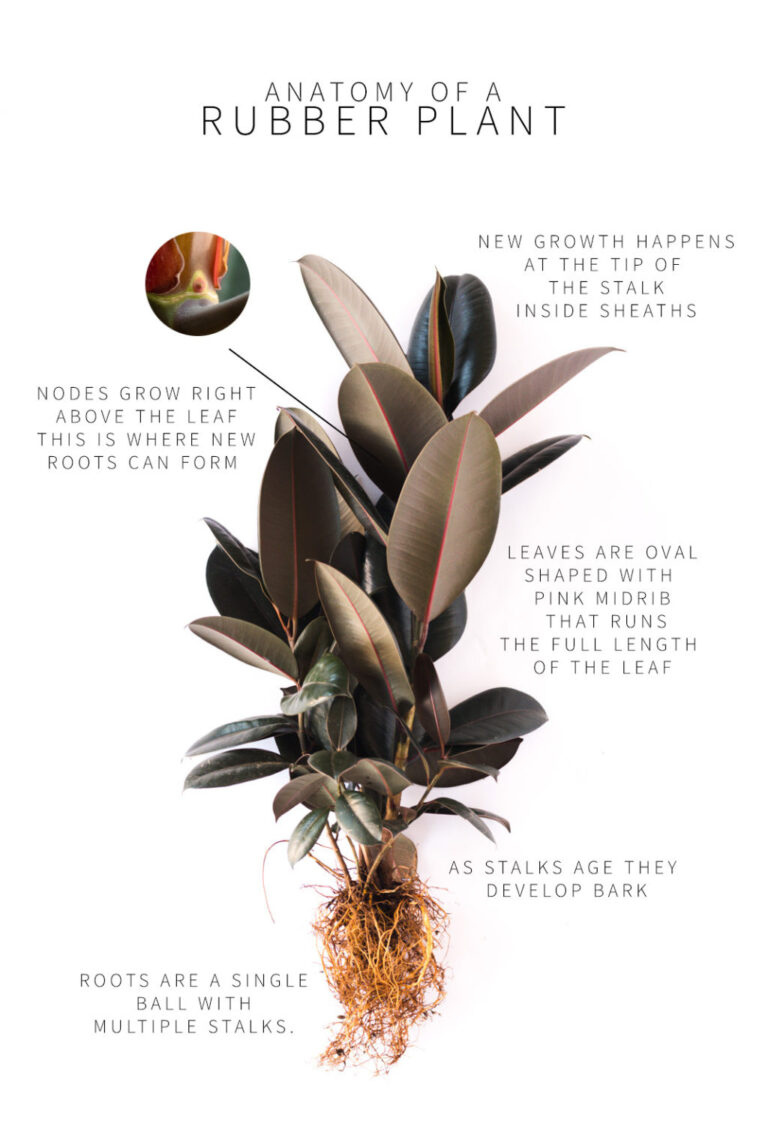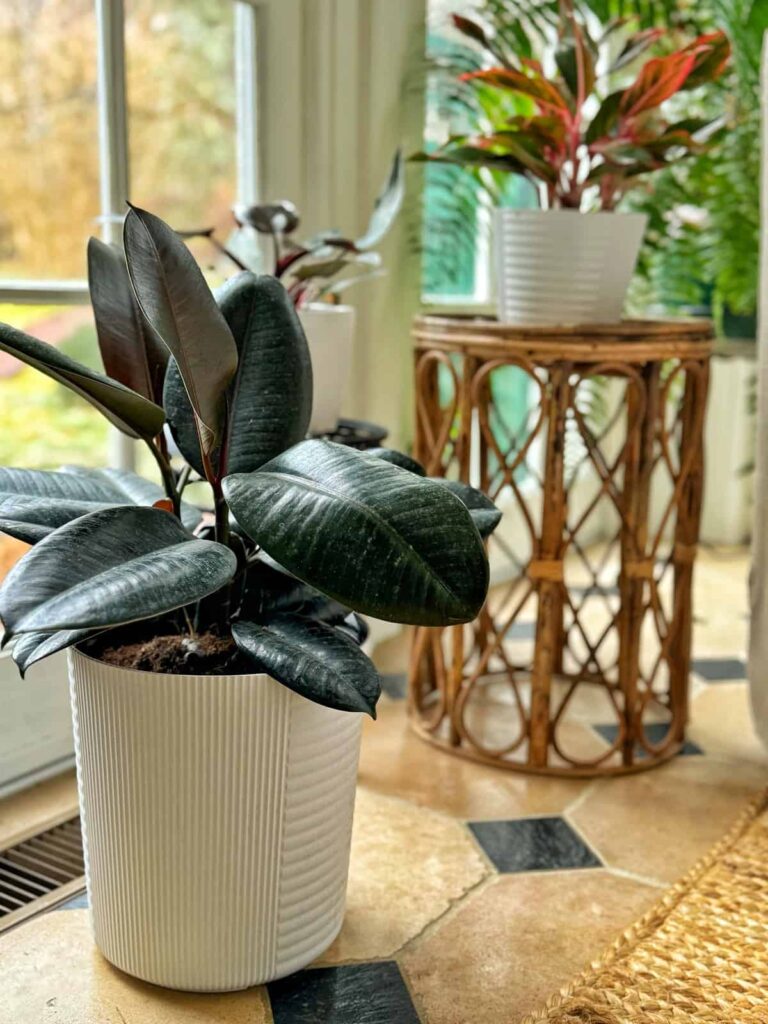Troubleshooting Rubber Plant Leaf Loss
Light and Temperature Impact
Rubber plants, like solar panels, crave light for photosynthesis. Inadequate light can lead to leaf drop, so it’s crucial to provide bright, indirect light to keep your rubber plant happy. The ideal temperature range is 60-75°F (15-24°C), as extreme temperatures can also result in leaves falling off.
Changes in light levels, particularly when moving the plant from outdoors to indoors, can cause leaf drop. To prevent this, acclimate the plant gradually and consider adding supplemental light if needed. If your rubber plant is not getting enough light, it might become leggy and drop its lower leaves.
Tables summarizing common light and temperature impact on rubber plant leaf loss:
| Light Condition | Impact on Plant |
|---|---|
| Insufficient Light | Leaf drop, legginess |
| Bright, Indirect Light | Optimal growth |
| Direct Sunlight | Potential leaf scorch |
| Temperature (°F) | Impact on Plant |
|---|---|
| <60 | Leaf drop, slow growth |
| 60-75 | Optimal growth |
| >75 | Stress, leaf drop |
Watering Practices
Watering is a delicate balance for rubber plants. Overwatering can cause leaves to become mushy, while underwatering might make them crispy and lifeless. Finding the watering sweet spot is essential. Overwatered leaves should be pruned to prevent rot, and it’s advisable to water at the base to avoid soggy foliage.
Rubber plants can lose leaves due to both overwatering and underwatering. Monitor the soil’s moisture level and ensure the pot has proper drainage. Drooping leaves are often a sign that adjustments in your watering routine are needed.
| Watering Practice | Impact on Plant |
|---|---|
| Overwatering | Mushy leaves, root rot |
| Underwatering | Crispy leaves, drooping |
| Proper Drainage | Healthy growth |
By maintaining the right light, temperature, and watering practices, you’ll help your rubber plant thrive and prevent common issues like leaf drop. For more detailed tips, check out our related articles on rubber plant watering and rubber plant soil.
Maintaining Proper Humidity
Maintaining proper humidity is essential to prevent your rubber plant leaves from falling off. Rubber plants thrive in environments with 40-50% humidity. Low humidity can result in brown tips on the leaves and eventual leaf drop. Increasing the moisture around your rubber plant can be achieved by using a humidifier, misting the plant, or placing a water-filled tray of pebbles underneath it.
| Method | Description |
|---|---|
| Humidifier | Increases overall room humidity. |
| Misting | Direct application of moisture to leaves. |
| Pebble Tray | Water in a tray below the plant increases humidity through evaporation. |
In dry indoor environments, such as those with air conditioning or heating, maintaining proper humidity becomes even more crucial. Keeping the plant away from drafts and heaters can also help create a stable environment to prevent leaf drop.
Soil Health and Drainage
Proper soil health and drainage are pivotal for the well-being of your rubber plant. Soil compaction and poor drainage can quickly lead to leaf dropping. It’s recommended to use a well-draining soil mix composed of peat moss, perlite, and sand to prevent soil compaction, which negatively impacts root health and can lead to leaf drop.
| Soil Component | Function |
|---|---|
| Peat Moss | Retains moisture and provides acidity. |
| Perlite | Improves drainage and aeration. |
| Sand | Adds structure and facilitates drainage. |
It’s also important to consider the size of the plant’s container. Rubber plants kept in containers that are too small for too long may experience inhibited root growth, leading to leaf drop. Nutrient-deficient or degraded soil can further exacerbate this issue. For optimal results, ensure your rubber plant is repotted regularly using an appropriate rubber plant soil mix.
Nutrient Deficiencies
Nutrient deficiencies can be a significant cause of yellowing leaves and leaf drop in rubber plants. Deficiencies in nitrogen, potassium, or magnesium can manifest as yellowing leaves. Combat these deficiencies with a balanced fertilizer containing essential elements like nitrogen, phosphorus, and potassium. Iron deficiency also affects the plant, usually starting on younger leaves.
| Nutrient | Deficiency Symptoms | Remedy |
|---|---|---|
| Nitrogen | Yellowing lower leaves | Balanced fertilizer |
| Potassium | Browning leaf edges | Balanced fertilizer |
| Magnesium | Interveinal chlorosis | Epsom salts |
| Iron | Yellowing young leaves | Iron chelate |
Black spots on leaves, wilting, and slow growth are often signs of overwatering, which can lead to root rot. In such cases, trim off the damaged leaves, repot the plant in new soil with good drainage, and treat the roots with a fungicide suitable for rubber plants (Fig & Bloom). Ensure consistent moisture to facilitate nutrient uptake, an integral part of rubber plant care in winter.
Dealing with Pest Infestations
Pest infestations can be a significant cause of leaf drop in rubber plants. Common pests, such as spider mites, mealybugs, and aphids, can weaken your plant, leading to issues like rubber plant leaves falling off. Identifying and addressing these pests promptly is crucial for maintaining a healthy, vibrant rubber plant.
Natural Growth Cycle
Understanding your rubber plant’s natural growth cycle can help differentiate between normal leaf loss and pest-induced damage. Rubber plants may naturally shed lower leaves as they grow (The Spruce). However, persistent or widespread leaf drop often signals a problem.
| Cause | Indication |
|---|---|
| Natural Shedding | Occasional loss of lower leaves |
| Pest Infestation | Widespread leaf drop, visible pests |
Seasonal changes can also impact your plant. Rubber plants are sensitive to sudden shifts in light levels. Moving your plant from a bright room to a darker space can trigger leaf drop. Bringing it indoors after a summer outside may similarly result in leaf loss.
Tips for Preventing Leaf Drop
Preventing leaf drop involves several key strategies:
- Regular Inspections:
- Check for pests regularly. Look for signs such as webbing (spider mites), sticky residue (mealybugs), and tiny bugs (aphids).
- Proper Watering Practices:
- Over or under watering can contribute to leaf loss. Let the soil dry out between waterings and check moisture levels before adding water. Our guide on rubber plant watering offers detailed tips.
- Maintaining Optimal Light Levels:
- Ensure your rubber plant receives 6 to 8 hours of bright but indirect light daily to promote healthy growth. Refer to our article on rubber plant light requirements for more information.
- Cleaning the Leaves:
- Keep leaves clean to allow efficient photosynthesis. Wipe them down occasionally to remove dust and debris.
- Relocating with Care:
- Avoid abrupt changes in the plant’s environment. Gradually adjust its position if you need to move it to a different light condition.
- Proper Soil and Fertilizer Use:
- Ensure good rubber plant soil health and use appropriate rubber plant fertilizer to meet nutrient needs.
| Prevention Tips | Reason |
|---|---|
| Regular Inspections | Early pest detection |
| Proper Watering | Prevents root issues |
| Optimal Light Levels | Encourages new growth |
| Clean Leaves | Enhances photosynthesis |
| Gradual Relocation | Minimizes stress |
References:
By following these tips, you can maintain a healthy rubber plant and prevent unnecessary leaf drop. For more comprehensive care guidelines, visit our article on burgundy rubber tree care.




